200 Hour Kundalini Yoga Teacher Training in Bali


Allow Maa Shakti Yog to introduce you to a unique 200-hour Kundalini Yoga Teacher Training in Bali that will transform your life. Our school is located in a gorgeous natural location with views of Bali's stunning rice farms and stunning beaches. This course is designed to provide you with the knowledge and resources you need to not only broaden your personal Kundalini Yoga experience but also benefit others through this transforming practice.
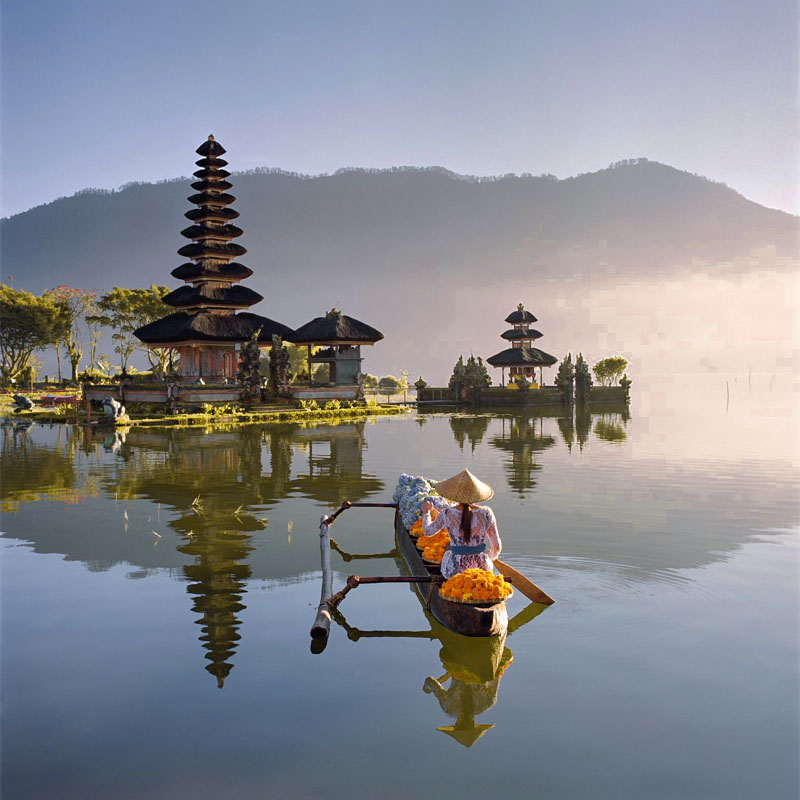
This is an extraordinary chance to get a life-changing experience while tasting the exotic spirit of Bali. Maa Shakti Yog’s training gives the learners an excellent opportunity to learn, transform, and share their passion with like-minded individuals interested in yoga.
This programme is your entry point towards becoming a confident and inspiring Kundalini Yoga teacher, ready to spread the gift of this transformative practice to the world.
According to the Patanjali yoga sutra of ancient India, which is the oldest and most systematic work on yoga, the human body is composed of seven prominent chakras, or kundalinis.
Our 200-hour Kundalini yoga teacher training course will give you strong control over the inner power within you.
Have a detailed note on the seven chakras:

The first chakra, Muladhara, is situated at the base of the spine and is the root of our energy structure. It is affiliated with the earth, and its equivalent colour is red; this stands for security, stability, and steadiness. When balanced, the Muladhara turns into a source of safety and familiarity with physical reality. Imagine a big, strong tree; its roots stay deep in the ground. Similarly, a healthy, balanced Muladhara helps us stay grounded in our existence.
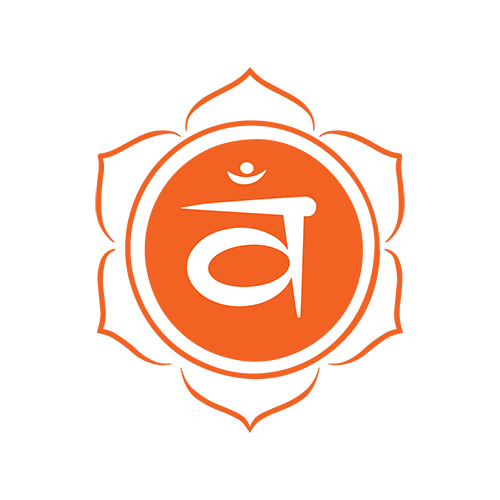
Svadhisthana is the second chakra, which rises up from Muladhara and is localised in the lower abdomen. Ruled by the water element and lying in the orange zone, this is the origin of passion, creativity, and the feeling self. Svadhisthana controls feelings and emotions, and the positive, balanced aspect of this chakra is to be able to feel and enjoy feelings, sensuality, and passion for life. The Svadhisthana chakra is a lot like a clear and gently flowing stream, and if it is balanced, emotions and creative energy can freely move about in our bodies.

The Manipura chakra, which is situated in the upper abdomen, is represented by the element of fire and the colour yellow. This chakra is the generator of our will, our internal strength, and most importantly, our digestion, be it food or information we intake. A balanced Manipura fosters feelings of confidence, self-esteem, and a strong sense of "I can." Imagine the burning sun: balanced Manipura helps our inner fire burn clearly and will help us achieve everything we want.
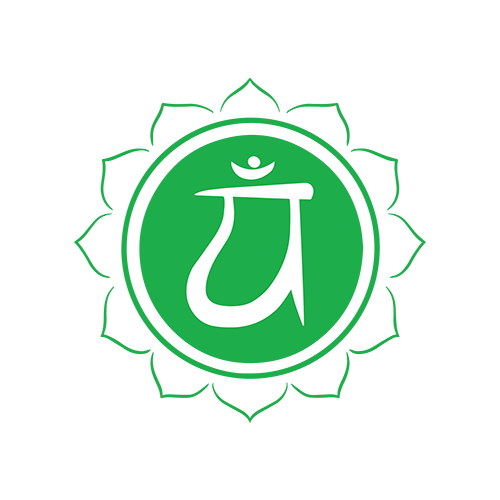
The Anahata chakra is one of the key centres located in the chest and is widely regarded as the energetic core. It is located in the air triplicity and is associated with the colour green. It influences love, compassion, and forgiveness. A balanced Anahata helps to feel and share love—for one’s self and others—compassionately. Picture non-touching contact—a healthy Anahata equates to empathy and positive feelings for the self and the entire universe.

The vishuddha chakra is positioned in the area of the throat and is related to the ether element and blue color. This chakra is closely connected to the issues of communication, freeness in expressing, and telling the truth. The Vishuddha personality trait is also restored when balanced and helps in honest, clear, and constructive communication and expression. Consider the sound of a crystal-clear ringing—this is a balanced Vishuddha—in which we have the strength to speak the truth with our voice.

Located just above and between the two eyebrows, the Ajna chakra is one of the critical centres for imagination, perception, and insight. Also linked to the lighter body component and the violet frequency, this chakra is like the vision organ inside of you, able to perceive beyond what’s tangible. If Ajna is balanced, it positively affects our ability to tune into intuition and insight and attain our higher selves. Visualise a steady, piercing look; paternalized Ajna helps to develop intuition and fixates on the spiritual world.
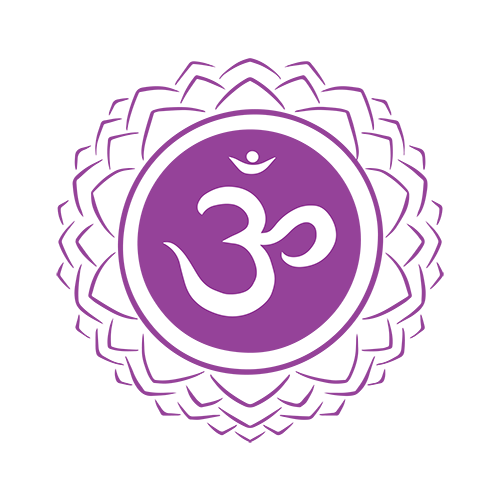
The Sahasrara chakra is the one situated at the crown of the head, providing the concepts of pure consciousness and divinity. It thus covers all the elements of stone and is represented by the colour violet. Sahasrara cannot be carved out in extremes, so with the centre of it aligned, one becomes spiritual, feeling at one with everything that is. It is said that the Sahasrara is a thousand-petaled lotus that blooms; balance in this chakra means that one’s awareness can blossom and experience the fullness of life’s possibilities.
Become the best version of yourself and explore the depths of your soul at the Maa Shakti Yog Bali School, a retreat located in the heart of Balinese beauty.
Our transformative 200-hour Kundalini Yoga Teacher Training programme is meticulously designed to:

Come learn with us at Maa Shakti Yog Bali School and discover a new version of yourself. Develop a passion for teaching, experience the rise of your personal Kundalini, and spread the light of yoga around the world.




Asana is a Sanskrit word that means, "Yogic Postures or Movements". Traditionally defines, asana means "Comfortable Seat", which means, it is a seated posture used in meditation.
Yoga poses that you will learn in 200 hour yoga ttc.
1st Week
Sitting postures
2nd Week
Sitting postures
Back bending postures
Forward fold
3rd Week
Pranayama, also known as breathing exercise is the foundation of yoga practice. "Prana" means breath and "Ayama" means to control; on combined, "Pranayama" means "to control or hold the breath".
The pranayama syllabus for a 200 hour yoga teacher training bali typically covers the following techniques and concepts:
Observing your deep breaths which facilitate to still your mind for a few minutes, where it is away from all the unnecessary aspects; this is meditation. There are mainly 4 types of meditation styles you'll focus on, i.e., Traditional Himalayan Meditation, Healing Meditation, Crystal Meditation, and Sound Meditation.
The meditation syllabus for a 200 hour yoga teacher training bali typically covers the following :
Chanting the powerful, spiritual mantras helps in the union of the body with the mind. It will surely give you a deeply philosophical experience.
The mantra chanting syllabus for a 200 hour yoga teacher training bali typically covers the following :
Introduction to Mantra Chanting: Understanding the significance of mantra chanting in yoga, the benefits, and how it can be used as a tool for relaxation and meditation.
Basics of Sanskrit Language: Introduction to the Sanskrit language, learning the pronunciation of Sanskrit alphabets and basic vocabulary.
Basic Mantras: Learning simple mantras such as 'Om' and 'Shanti' and their meaning and significance in yoga.
Mantras for Meditation: Learning mantras for meditation such as 'Gayatri Mantra', 'Mahamrityunjaya Mantra', 'Om Namah Shivaya' and more.
Bhakti Yoga: Understanding the devotional aspect of yoga, and how mantra chanting can be used as a tool for spiritual growth.
Group Chanting: Practicing mantra chanting in a group, understanding the power of collective vibrations and how it can enhance the benefits of mantra chanting.
Mantra Therapy: Understanding the therapeutic aspect of mantra chanting, how it can be used to alleviate physical, mental and emotional ailments.
Integrating Mantra Chanting in Yoga Classes: Learning how to integrate mantra chanting in yoga classes as a teacher, and how to make it an integral part of yoga practice.
Anatomy deals with the bodily structure of an individual and how to protect from injuries. In the yoga teacher training classes, they conduct the theoretical class of Anatomy too.
The Anatomy and Physiology syllabus for a 200 hour yoga teacher training program in bali includes the following topics:
The aim of this syllabus is to provide an understanding of how the human body works and how it relates to yoga practice. This knowledge can help yoga teachers to teach their students safely and effectively, and to make modifications and adjustments as necessary to meet the individual needs of their students.
The 200 hour yoga teacher training courses focus on body alignments, which means doing poses or asanas in an effortless state of body, according to the body composition of an individual. Alignments are very significant to understand any style of yoga practice.
The Alignment and Adjustment syllabus for a 200 hour yoga teacher training program in bali includes the following topics:
Philosophy here means Yoga Philosophy which includes the systemic study of the body, mind, and spirit of an individual.
The philosophy syllabus for a 200-hour yoga teacher training program includes the following topics:
Yoga Mudras means "gesture" that facilitates the flow of energy in the body of an individual. Treating under the heading of Yoga Mudras, Bandhas is body locks in yoga.
The Mudra and Bandhas syllabus for a 200-hour yoga teacher training program includes the following topics:
Shatkarmas is basically the six purification techniques that aim to clean the body, free from all diseases. More than this, it improves the flow of prana into the organs of the body.
The Shatkarmas syllabus for a 200-hour yoga teacher training program includes the following topics:
During the Shatkarmas portion of the yoga teacher training, students can learn the techniques, practice them, and also learn about the benefits, contraindications, and precautions. It is also important to learn about the traditional context and cultural significance of these practices.
Teaching methodology in the yoga courses specifically aim in providing a nurturing environment to students, making lesson plans, setting class environment, and conducting classes regarding various yogic practices for gaining enough confidence and awareness on building a good student-teacher relationship.
The Teaching methodology syllabus for a 200 hour yoga teacher training program in bali includes the following topics:
Teaching skills:This includes techniques for effective communication, how to give clear instructions, how to use voice and body language, how to create a positive and supportive environment, and how to manage different types of students.
Lesson planning:This includes how to plan and sequence a yoga class, how to choose appropriate asanas, pranayama, and meditation practices, how to modify the class for different levels of students, and how to create a safe and balanced class.
Teaching practice:This includes opportunities for participants to practice teaching and receiving feedback from the trainers and other participants.
Ethics and professionalism:This includes understanding the ethical principles of yoga teaching, creating professional boundaries, maintaining student confidentiality, and creating a safe and inclusive environment for all students.
Business skills:This includes basic business skills such as marketing, branding, and how to create and maintain a successful yoga teaching career.
Adjustments and modifications:This includes understanding how to make adjustments and modifications to the asanas for different levels of students and how to use props and modifications to make the class safe and accessible to all.
Classroom management:This includes understanding how to manage the class and how to create a positive and supportive environment for all students.
Overall, the teaching methodology syllabus aims to help participants develop the skills and knowledge needed to become effective and confident yoga teachers.
.webp)
.webp)
.webp)
.webp)
.webp)
.webp)
.webp)
.webp)
.webp)
.webp)
.webp)
.webp)
.webp)
.webp)
.webp)
.webp)
.webp)
.webp)
.webp)
.webp)
.webp)
.webp)
.webp)
.webp)
.webp)
.webp)
.webp)
.webp)
Our yoga school is located in the charming town of Ubud, surrounded by breathtaking natural scenery and an artistic ambiance that will invigorate your senses.
Our accommodations for 200 hour yoga teacher training students are designed to offer you the utmost comfort and relaxation. Each room is equipped with modern amenities with magnificent views that will soothe your mind and spirit.
The yoga school also features a spacious lounge where you can unwind and connect with like-minded yogis, as well as a large swimming pool where you can refresh and recharge after a long day of practice.
At Maa Shakti Yog, we understand that yoga is more than just a physical practice. That's why we provide opportunities to explore the rich culture of Bali through cultural activities, local cuisine, and guided excursions. Immerse yourself in the vibrant ambiance of Bali and deepen your practice with Yoga in Bali with Maa Shakti Yog.
Facilities
During the 200-hour yoga teacher training, you will stay in a spacious room with an ensuite bathroom, a working desk, a sofa, overlooking the pool.








Maa Shakti Yog believes that “when the diet is wrong, medicine is of no use. When the diet is correct, medicine is of no need” (Ayurvedic Proverb).
We believe that a healthy diet is an essential component of any yoga teacher training. As an Ayurveda-inspired yoga center, we understand the importance of nourishing your body with the right foods to support your 200 hour yoga practice in Bali.
Our yogic food program is an integral part of our yoga programs in Bali. We offer delicious, all-vegetarian meals made from seasonal vegetables, fresh fruits, and juices. Our meals are cooked fresh daily to ensure that you receive all the necessary nutrients to fuel your body for your yogic practices.
Our menu is designed to support your body and mind throughout your training, providing you with the energy and sustenance you need to deepen your practice and achieve your goals.
The following dietary requirements are served:
The following meals are included:
The following drinks are included:
Reserve your seat on any one of our available dates.
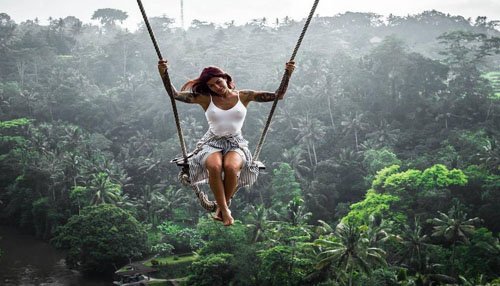
Bali Swing Park
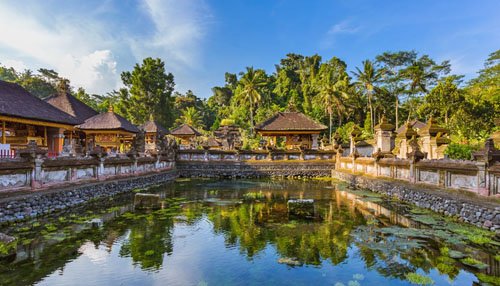
Pura Tirta Empul

Blue Lagoon Beach

Waterfall
At Maa Shakti Yog, we understand that life can be unpredictable, and circumstances may arise that prevent you from attending our 200 hour yoga teacher training program.
All fees paid for our 200 hour yoga teacher training program are generally non-refundable and non-transferable. However, if a change in scheduling occurs at the school's direction, students may transfer fees from one course to another if requested at least 20 days before the start of that course.
In the event that a student needs to cancel their booking, we offer the option to join a later course within a time span of two years. If a student chooses to take this option, a new deposit payment is not required.
Yes, a 200 hour yoga teacher training program is suitable for beginners in the field of yoga education. The 200 hour yoga teacher training program is designed to provide a foundational understanding of yoga and its philosophy, history, and practices. It covers various aspects of yoga, including asanas (postures), pranayama (breathing techniques), meditation, anatomy, and teaching methodology.
The program is structured in a way that allows beginners to gradually build their knowledge and skills, and it provides ample opportunities for practice and feedback. With dedication and commitment, beginners can successfully complete a 200 hour yoga teacher training program and start their career as a yoga teacher.
Completing a 200-hour yoga teacher training program comes with several benefits. Firstly, it provides a comprehensive understanding of yoga philosophy, history, and practices. This knowledge helps to deepen your personal yoga practice and also prepares you to teach yoga to others.
Secondly, upon completion of the program, you will receive a Yoga Alliance certification, which is recognized internationally. This certification enables you to teach yoga anywhere in the world and gives you credibility as a yoga teacher.
Lastly, the program provides opportunities for personal growth and self-discovery, as you connect with like-minded individuals and learn from experienced yoga teachers.
Overall, completing a 200-hour yoga teacher training program is a significant step towards establishing a career as a yoga teacher and deepening your understanding and practice of yoga.
Yes, it is necessary to complete 200-hour yoga teacher training program and obtain a Yoga Alliance certification to teach yoga officially. Yoga Alliance is an international organization that sets standards for yoga teacher training programs and certifies qualified yoga teachers.
Without a Yoga Alliance certification, one cannot officially teach yoga or join a recognized yoga studio. Therefore, completing a 200-hour yoga teacher training program is essential to acquire the necessary skills, knowledge, and certification to teach yoga and start a career in this field.
The teaching methods used in a 200 hour yoga teacher training program in Bali may vary depending on the program and the instructors. However, some common styles of yoga that are typically taught in these programs include Hatha, Vinyasa, Ashtanga, and Iyengar.
Hatha yoga focuses on physical postures and breath control, while Vinyasa yoga emphasizes flowing movements that synchronize with breath.
Ashtanga yoga is a more vigorous style that involves a set series of postures, and Iyengar yoga emphasizes alignment and the use of props to support the body.
These teaching methods aim to provide a comprehensive understanding of yoga and its practices, while allowing students to develop their personal practice and teaching skills.
Completing a 200-hour yoga teacher training program opens up various career opportunities in the field of yoga. One of the most obvious career paths is becoming a yoga teacher and teaching in studios, gyms, schools, and other settings.
With a Yoga Alliance certification, one can also teach yoga internationally and offer private classes.
Additionally, some yoga teachers choose to specialize in specific styles of yoga, such as prenatal yoga, children's yoga, or therapeutic yoga, and work with specific populations. Other career opportunities include yoga retreat leader, yoga studio manager, and yoga therapist.
Some yoga teachers also choose to further their education by completing advanced teacher training programs, which can lead to higher-level certifications and more specialized career opportunities. Overall, completing a 200-hour yoga teacher training program is a significant step towards establishing a career in the field of yoga and pursuing various career opportunities.
The minimum and maximum class sizes for a 200-hour yoga teacher training program may vary, but typically range from 15-20 students.
The average cost of a 200-hour yoga teacher training program varies, but typically ranges from $1,800 to $2,500 USD
There is no age restrictions for enrolling in a 200-hour yoga teacher training program, but typically require students to be 16 years or older.
Yes, there is a recognized certification for completing a 200-hour yoga teacher training program, which is provided by Yoga Alliance. Yoga Alliance is an international organization that sets standards for yoga teacher training programs and certifies qualified yoga teachers.
The certification is globally recognized and enables graduates to teach yoga in any part of the world. The Yoga Alliance certification ensures that the program has met certain standards and covers various aspects of yoga, including philosophy, history, practices, and teaching methodology.
Therefore, completing a 200-hour yoga teacher training program from a Yoga Alliance certified school is essential to acquire the necessary skills, knowledge, and certification to teach yoga officially and start a career in this field.